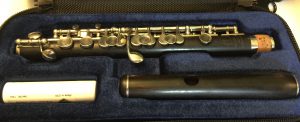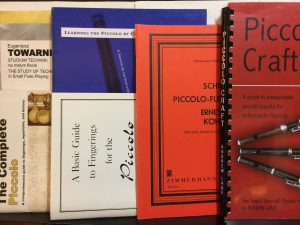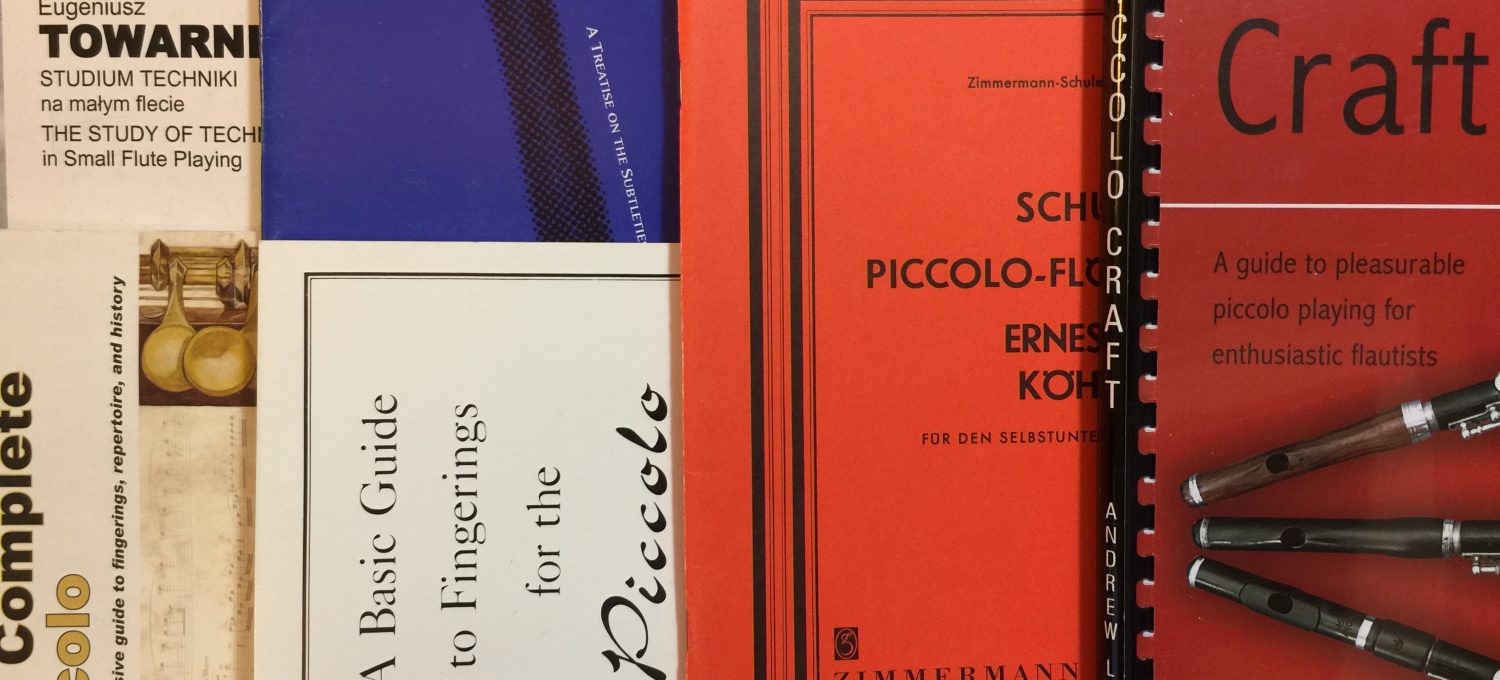Around this time of year, college ensembles, community ensembles, and applied lessons are starting back. In many ensembles, players young and old are finding themselves holding a piccolo, having never played one before. College students might be starting a semester of required piccolo study or a community musician might have been asked to play a part in the ensemble. For some, fear is setting in as I type this article. Successful piccolo playing, by choice or necessity, is all in how we approach the instrument.
First of all, what is the player’s goal? Are you just covering a part or is this a long-term goal? In either case, getting started is not much different than playing the flute. All of the same principles apply. Air support, posture, fingerings, and basic embouchure should translate fairly well. The player’s goals will determine what follows next.
 For those who need to develop a greater level of proficiency, the second step is to know your resources! Having piccolo-specific resources on hand or at least knowing where to find things like alternate fingerings can be a life saver. This article contains a short bibliography from my own dissertation to help the reader with this part. You are most welcome to use this information.
For those who need to develop a greater level of proficiency, the second step is to know your resources! Having piccolo-specific resources on hand or at least knowing where to find things like alternate fingerings can be a life saver. This article contains a short bibliography from my own dissertation to help the reader with this part. You are most welcome to use this information.
Many players approach the piccolo initially thinking, “This should be easy—it’s just a small flute.” While this is somewhat true, the piccolo is different in quite a few ways. The “small flute” approach may work initially but understanding the differences will aid in a player’s development. The resources in the attached .pdf address the both similarities and the differences using excerpts, exercises, and simple prose. Most also include comprehensive fingering charts and suggested alternate fingerings for the included passages.
Piccolo players are expected to play musically, with great control, and perfect intonation. Conductors and colleagues alike will assume that if one can play the flute well that one can play the piccolo equally well. This is a challenge for even the most seasoned professionals. Until recently, there haven’t been many resources to guide new piccolo players and the experience has been a sink or swim scenario.
As you begin your journey as a new piccolo player, ask yourself some of these questions:
- What do I want to sound like, sweet and dark or brighter and shimmery?
- What is my place in the ensemble, solo or soli?
- What is the style of the music, Sousa or Beethoven?
- What are my personal tendencies or challenges as a flutist?
- Is my instrument in good working order?
These are the questions that I think of when I am playing and that I ask my students during their lessons. If you can answer these questions with a fair amount of confidence, then you are already on the road to success. I encourage the use of the resources in the provided list and use them regularly myself. All of the authors are wonderful players who want (or desire) to share their knowledge. The piccolo can be a beautiful and expressive instrument capable of virtuosic acrobatics or beautifully lyrical lines that touch the soul. It is all up to the player. Be confident in your approach and the sky is the limit.
Piccolo resource .pdf: Piccolo Resources – The Necessities

